Stability Analysis and the Random Response of Anti-Sliding Pile for Erdaogou Landslide Considering Spatial Variability
Abstract
1. Introduction
2. Reliability Calculation Based on RLEM and RFDM
2.1. Random Field Theory
2.2. Failure Probability Calculation
3. Stability Analysis of Landslide
3.1. Geologic Environment
3.2. Deterministic Analysis
3.3. Reliability Analysis
4. Pile Response and Slope Reliability
4.1. Effect of COV
4.2. Effect of Correlation Coefficient
4.3. Effect of Scale of Fluctuation
4.4. Effect of Correlation Coefficient Rotation Angle
5. Discussion
6. Conclusions
Author Contributions
Funding
Data Availability Statement
Conflicts of Interest
References
- Chen, H.; Jiang, G.; Zhao, X.; Zhu, D.; Liu, Y.; Tian, H. Seismic Response Evaluation of High-Steep Slopes Supported by Anti-Slide Piles with Different Initial Damage Based on Shaking Table Test. Materials 2022, 15, 3982. [Google Scholar] [CrossRef]
- Wang, L.; Wu, C.; Gu, X.; Liu, H.; Mei, G.; Zhang, W. Probabilistic stability analysis of earth dam slope under transient seepage using multivariate adaptive regression splines. Bull. Eng. Geol. Environ. 2020, 79, 2763–2775. [Google Scholar] [CrossRef]
- Wang, L.Q.; Xiao, T.; Liu, S.L.; Zhang, W.; Yang, B.; Chen, L. Quantification of model uncertainty and variability for landslide displacement prediction based on Monte Carlo simulation. Gondwana Res. 2023. [Google Scholar] [CrossRef]
- Chen, F.; Zhang, R.; Wang, Y.; Liu, H.; Böhlke, T.; Zhang, W. Probabilistic stability analyses of slope reinforced with piles in spatially variable soils. Int. J. Approx. Reason. 2020, 122, 66–79. [Google Scholar] [CrossRef]
- Khan, F.S.; Azam, S. Spatial variability in swelling of aggregated expansive clays. Innov. Infrastruct. Solut. 2016, 1, 11. [Google Scholar] [CrossRef]
- Wang, L.; Wu, C.; Tang, L.; Zhang, W.; Lacasse, S.; Liu, H.; Gao, L. Efficient reliability analysis of earth dam slope stability using extreme gradient boosting method. Acta Geotech. 2020, 15, 3135–3150. [Google Scholar] [CrossRef]
- Qin, C.B.; Zhou, J.F. On the seismic stability of soil slopes containing dual weak layers: True failure load assessment by finite-element limit-analysis. Acta Geotech. 2023, 1–23. [Google Scholar] [CrossRef]
- Wang, L.; Wu, C.Z.; Li, Y.Q.; Liu, H.; Zhang, W.; Chen, X. Probabilistic risk assessment of unsaturated slope failure considering spatial variability of hydraulic parameters. KSCE J. Civ. Eng. 2019, 23, 5032–5040. [Google Scholar] [CrossRef]
- Chen, F.; Wang, L.; Zhang, W. Reliability assessment on stability of tunnelling perpendicularly beneath an existing tunnel considering spatial variabilities of rock mass properties. Tunn. Undergr. Space Technol. 2019, 88, 276–289. [Google Scholar] [CrossRef]
- Zhang, W.G.; He, Y.W.; Wang, L.Q.; Liu, S.; Meng, X. Landslide Susceptibility Mapping Using Random Forest and Extreme Gradient Boosting: A Case Study of Fengjie, Chongqing. Geol. J. 2023. [Google Scholar] [CrossRef]
- Jiang, S.H.; Zeng, S.H.; Yang, J.H.; Yao, C.; Huang, J.; Zhou, C. Slope reliability analysis by simulation of non-stationary random field of undrained shear strength. Rock Soil Mech. 2018, 39, 1071–1081. (In Chinese) [Google Scholar]
- Chen, L.; Zhang, W.; Gao, X.; Wang, L.; Li, Z.; Böhlke, T.; Perego, U. Design charts for reliability assessment of rock bedding slopes stability against bi-planar sliding: SRLEM and BPNN approaches. Georisk Assess. Manag. Risk Eng. Syst. Geohazards 2020, 16, 360–375. [Google Scholar] [CrossRef]
- Chen, L.; Zhang, W.; Zheng, Y.; Gu, D.; Wang, L. Stability analysis and design charts for over-dip rock slope against bi-planar sliding. Eng. Geol. 2020, 275, 105732. [Google Scholar] [CrossRef]
- Gao, Y.; Li, Z.; Cui, W.; Sun, D.; Yu, H. Effect of initial void ratio on the tensile strength of unsaturated silty soils. Acta Geotech. 2023, 1–14. [Google Scholar] [CrossRef]
- Griffiths, D.V.; Huang, J.; Fenton, G.A. Probabilistic slope stability analysis using RFEM with non-stationary random fields. In Geotechnical Safety and Risk V; IOS Press: Amsterdam, The Netherlands, 2015; pp. 704–709. [Google Scholar]
- Wang, C.; Leng, X.L.; Li, H.L.; Li, G. Probabilistic stability analysis of underground caverns considering spatial variation of joint distribution. Rock Soil Mech. 2021, 42, 224–233. [Google Scholar]
- Zhu, D.; Griffiths, D.V.; Fenton, G.A. Worst-case spatial correlation length in probabilistic slope stability analysis. Géotechnique 2019, 69, 85–88. [Google Scholar] [CrossRef]
- Liu, L.L.; Deng, Z.P.; Zhang, S.H.; Cheng, Y.M. Simplified framework for system reliability analysis of slopes in spatially variable soils. Eng. Geol. 2018, 239, 330–343. [Google Scholar] [CrossRef]
- Li, D.Q.; Xiao, T.; Cao, Z.J.; Zhou, C.B.; Zhang, L.M. Enhancement of random finite element method in reliability analysis and risk assessment of soil slopes using Subset Simulation. Landslides 2016, 13, 293–303. [Google Scholar] [CrossRef]
- Oguz, E.A.; Yalcin, Y.; Huvaj, N. Probabilistic slope stability analyses: Effects of the coefficient of variation and the cross-correlation of shear strength parameters. In Proceedings of the Geotechnical Frontiers 2017, Orlando, FL, USA, 12–15 March 2017; pp. 363–371. [Google Scholar]
- Huang, J.; Zhao, J.; Duan, X.R.; Zhang, J. Reliability analysis for soil slopes reinforced with piles using shear strength reduction method. J. Civ. Environ. Eng. 2020, 42, 11–18. [Google Scholar]
- Li, L.; Liang, R.Y. Reliability-based design for slopes reinforced with a row of drilled shafts. Int. J. Numer. Anal. Methods Geomech. 2014, 38, 202–220. [Google Scholar] [CrossRef]
- Gong, W.P.; Tang, H.M.; Juang, C.H.; Wang, L. Optimization design of stabilizing piles in slopes considering spatial variability. Acta Geotech. 2020, 15, 3243–3259. [Google Scholar] [CrossRef]
- Lü, Q.; Xu, B.; Yu, Y.; Zhan, W.; Zhao, Y.; Zheng, J.; Ji, J. A practical reliability assessment approach and its application for pile-stabilized slopes using FORM and support vector machine. Bull. Eng. Geol. Environ. 2021, 80, 6513–6525. [Google Scholar] [CrossRef]
- Vanmarcke, E.H. Probabilistic modeling of soil profiles. J. Geotech. Eng. Div. 1977, 103, 1227–1246. [Google Scholar] [CrossRef]
- Cho, S.E. Probabilistic stability analysis of rainfall induced landslides considering spatial variability of permeability. Eng. Geol. 2014, 171, 11–20. [Google Scholar] [CrossRef]
- Cho, S.E. Effects of spatial variability of soil properties on slope stability. Eng. Geol. 2007, 92, 97–109. [Google Scholar] [CrossRef]
- Lü, Q.; Xiao, Z.; Zheng, J.; Shang, Y. Probabilistic assessment of tunnel convergence considering spatial variability in rock mass properties using interpolated autocorrelation and response surface method. Geosci. Front. 2018, 9, 1619–1629. [Google Scholar] [CrossRef]
- Li, K.S.; Lumb, P. Probabilistic design of slopes. Can. Geotech. J. 1987, 24, 520–535. [Google Scholar] [CrossRef]
- Zhu, H.; Zhang, L.M. Characterizing geotechnical anisotropic spatial variations using random field theory. Can. Geotech. J. 2013, 50, 723–734. [Google Scholar] [CrossRef]
- Tian, N.; Chen, J.; You, W.J.; Huang, J.; Zhang, J.; Yi, S.; Fu, X.; Tian, K. Simulation of undrained shear strength by rotated anisotropy with non-stationary random field. Chin. J. Geotech. Eng. 2021, 43 (Suppl. S2), 92–95. [Google Scholar]
- Cheng, H.; Chen, J.; Chen, R.; Chen, G.; Zhong, Y. Risk assessment of slope failure considering the variability in soil properties. Comput. Geotech. 2018, 103, 61–72. [Google Scholar] [CrossRef]
- Xu, B.S.; Liu, R.C.; Li, L.X.; Gong, M.; Wang, Y.K. Study of slope deformation and parameters sensitivity in supporting design of composite soil nailing wall. Rock Soil Mech. 2011, 32, 393–400. [Google Scholar]
- Wang, L.Q.; Huang, B.L.; Zhang, Z.H.; Dai, Z.; Zhao, P.; Hu, M. The analysis of slippage failure of the HuangNanBei slope under dry-wet cycles in the Three Gorges Reservoir Region, China. Geomat. Nat. Hazards Risk 2020, 11, 1233–1249. [Google Scholar] [CrossRef]
- Zhang, S.L.; Yin, Y.P.; Hu, X.W.; Wang, W.P.; Zhang, N.; Zhu, S.N.; Wang, L.Q. Dynamics and emplacement mechanisms of the successive Baige landslides on the Upper Reaches of the Jinsha River, China. Eng. Geol. 2020, 278, 105819. [Google Scholar] [CrossRef]
- Zhang, C.Y.; Yin, Y.P.; Yan, H.; Zhu, S.; Li, B.; Hou, X.; Yang, Y. Centrifuge modeling of multi-row stabilizing piles reinforced reservoir landslide with different row spacings. Landslides 2023, 20, 559–577. [Google Scholar] [CrossRef]
- Liu, S.L.; Wang, L.Q.; Zhang, W.G.; He, Y.; Pijush, S. A comprehensive review of machine learning-based methods in landslide susceptibility mapping. Geol. J. 2023. [Google Scholar] [CrossRef]
- Zhang, W.G.; Gu, X.; Hong, L.; Han, L.; Wang, L. Comprehensive review of machine learning in geotechnical reliability analysis: Algorithms, applications and further challenges. Appl. Soft Comput. 2023, 136, 110066. [Google Scholar] [CrossRef]
- Wang, L.Q.; Zhang, Z.H.; Huang, B.L.; Hu, M.; Zhang, C. Triggering mechanism and possible evolution process of the ancient Qingshi landslide in the Three Gorges Reservoir. Geomat. Nat. Hazards Risk 2021, 12, 3160–3174. [Google Scholar] [CrossRef]
- Zhang, K.Q.; Wang, L.Q.; Dai, Z.W.; Huang, B.; Zhang, Z. Evolution trend of the Huangyanwo rock mass under the action of reservoir water fluctuation. Nat. Hazards 2022, 113, 1583–1600. [Google Scholar] [CrossRef]
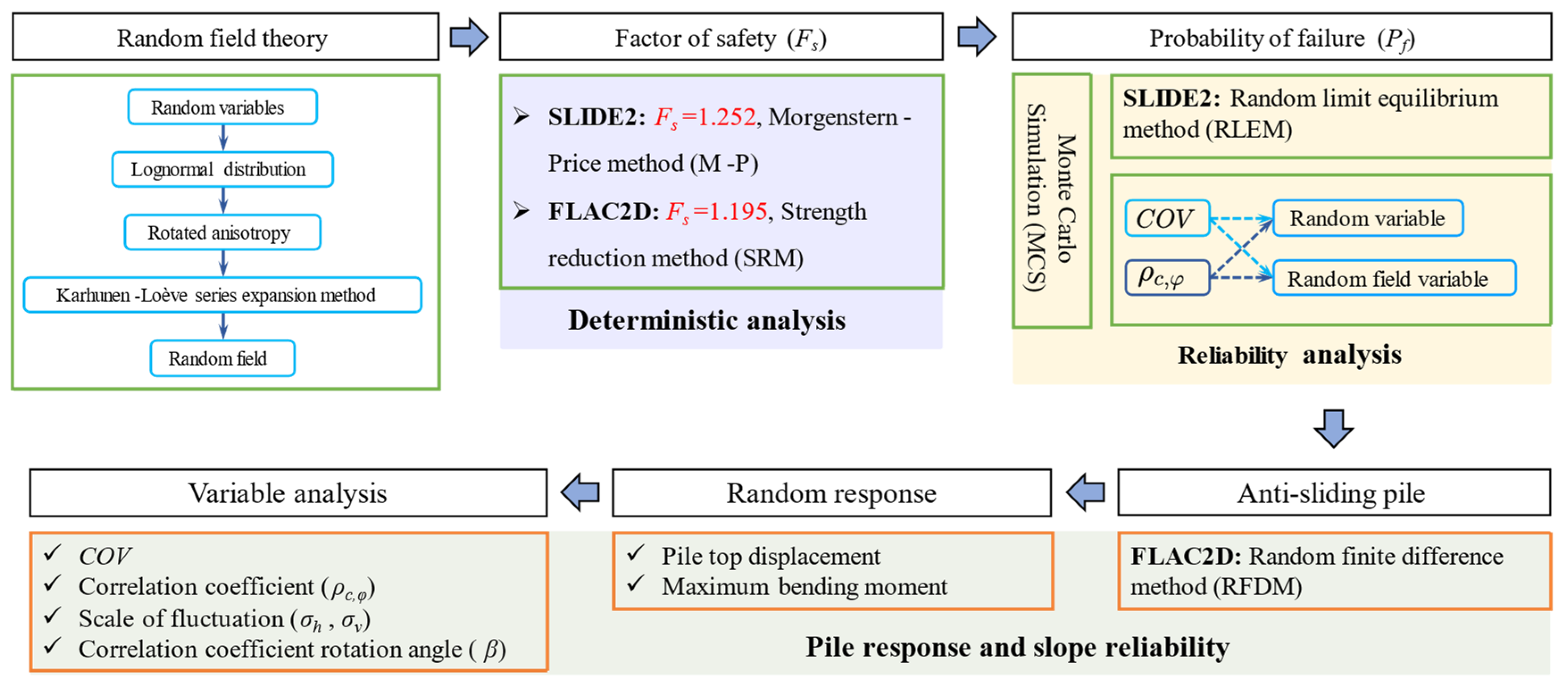
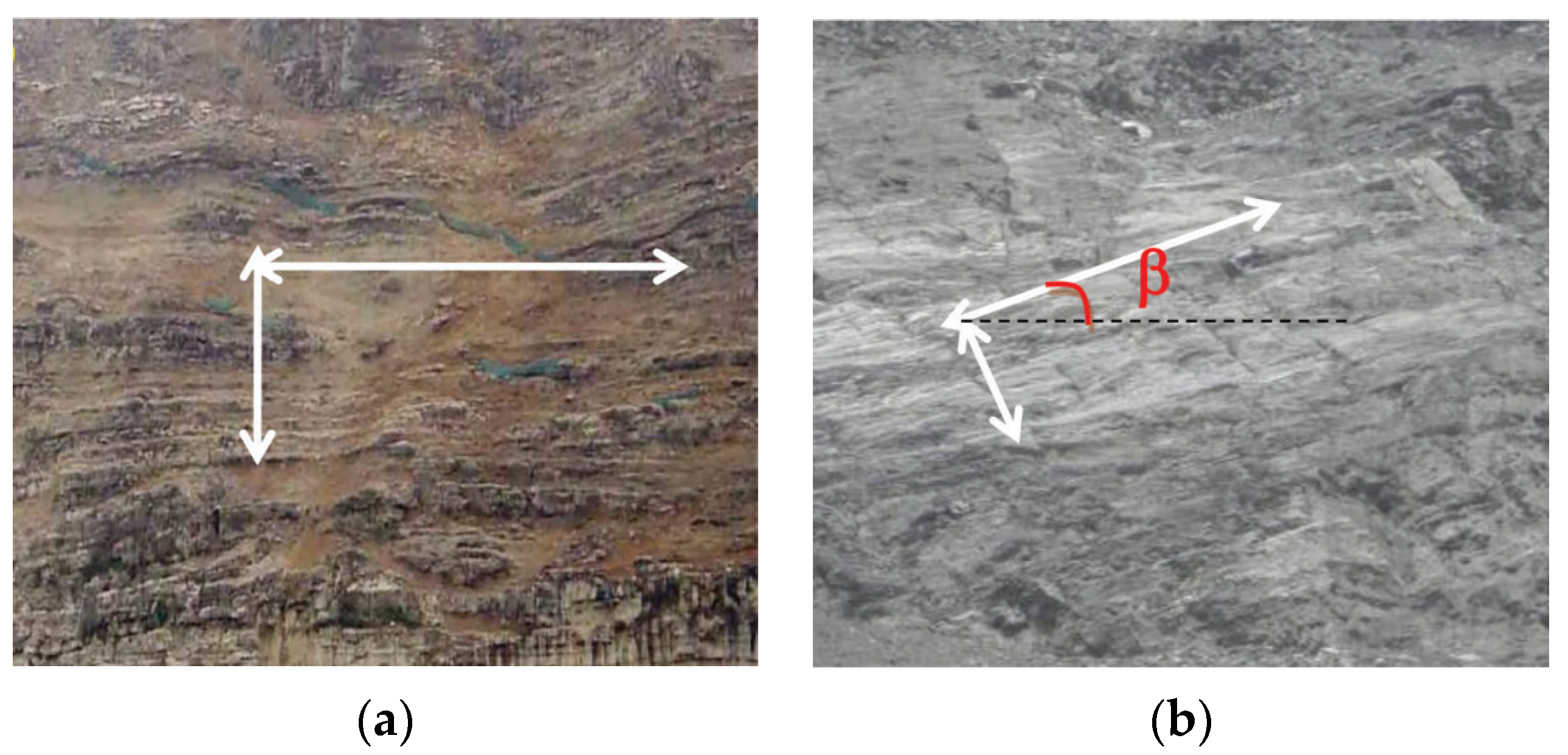
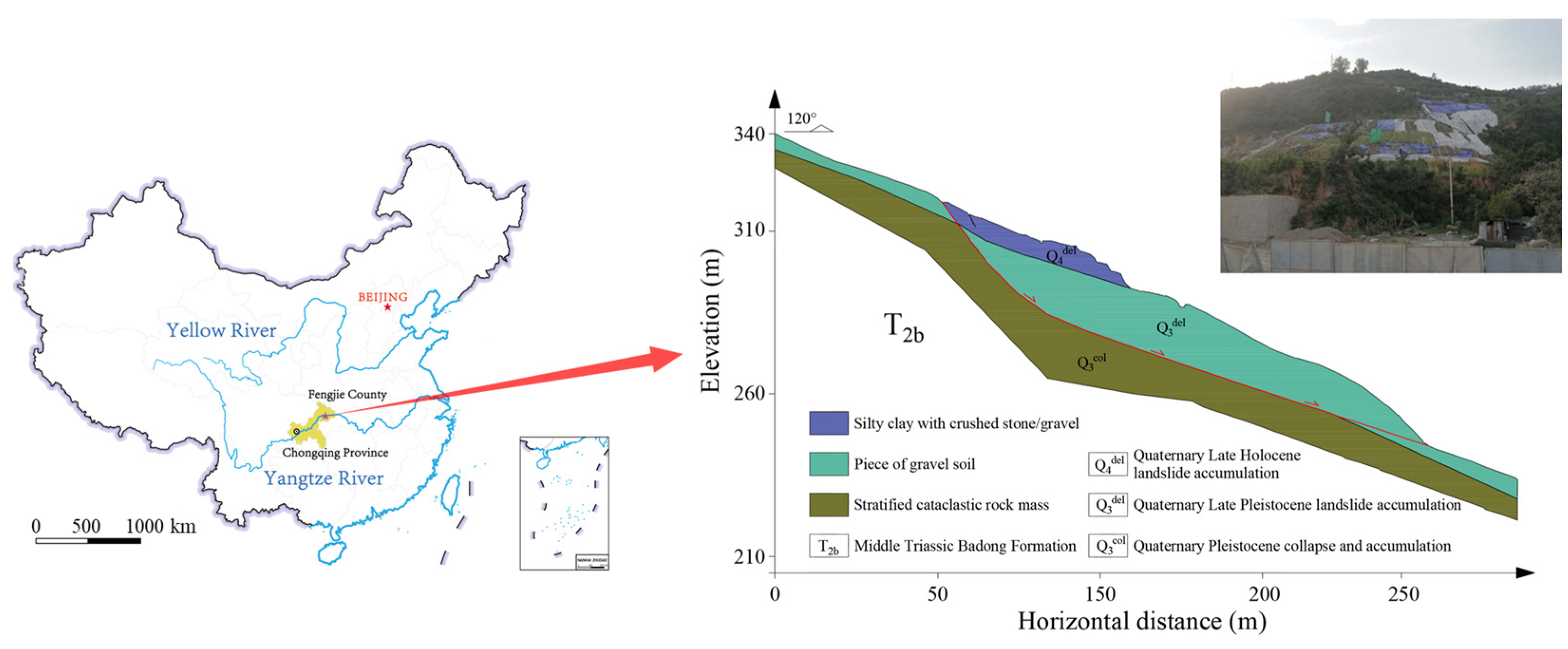


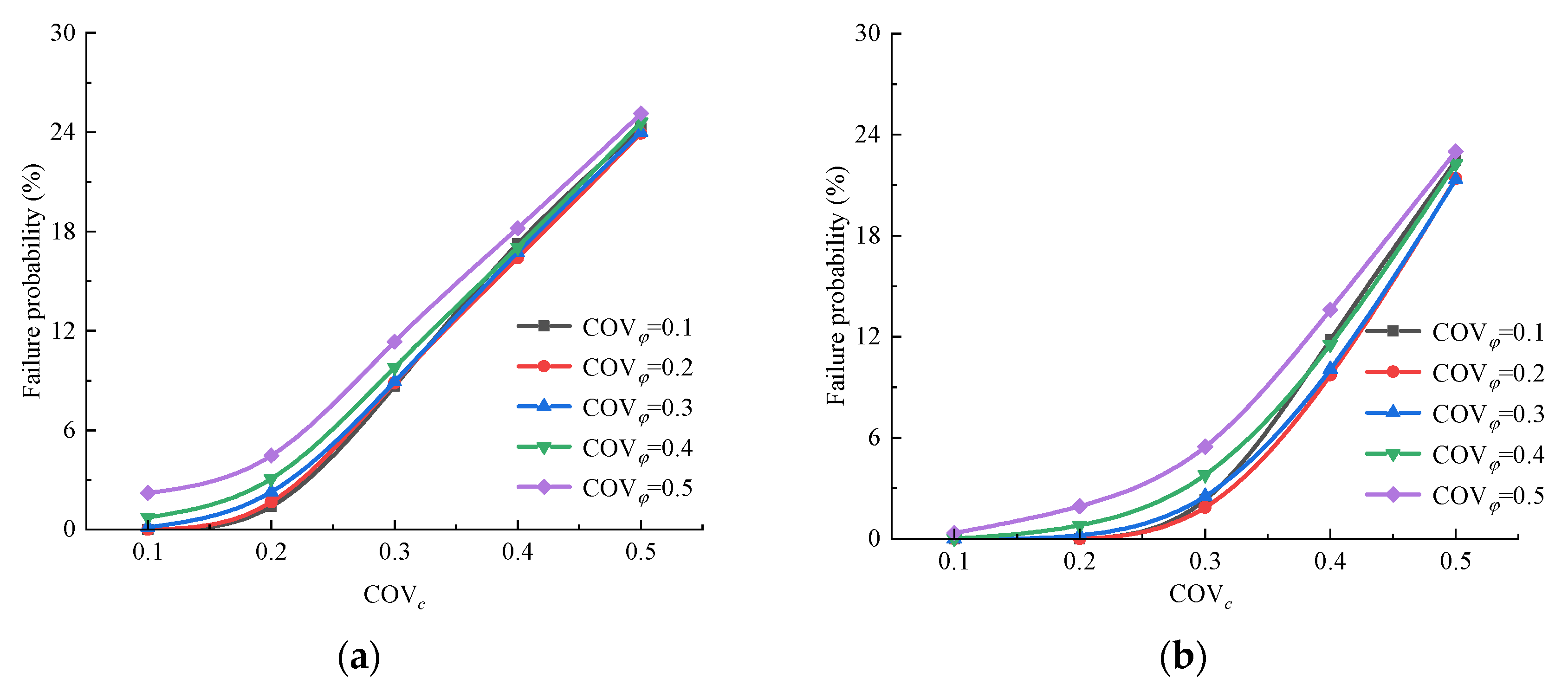
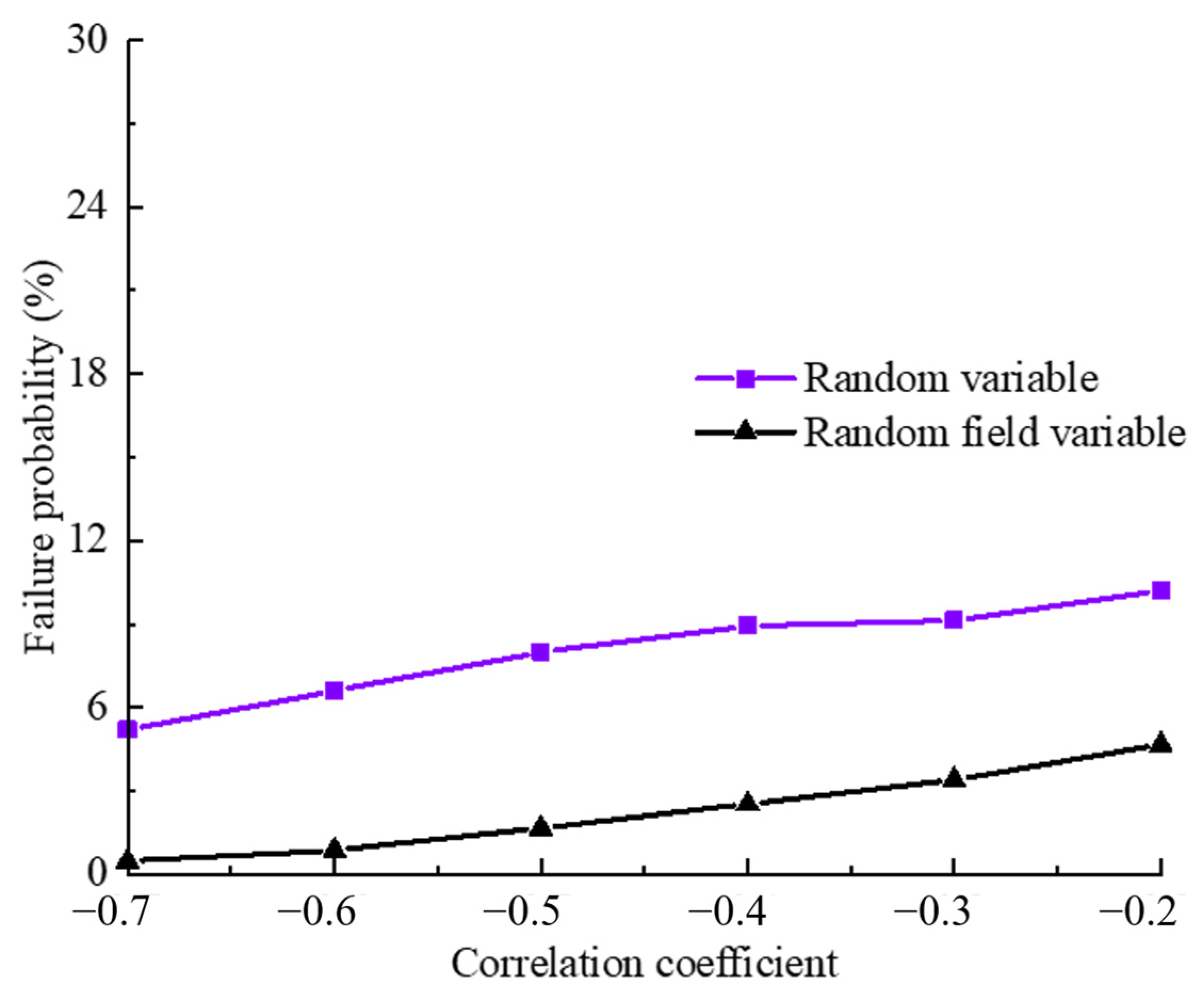
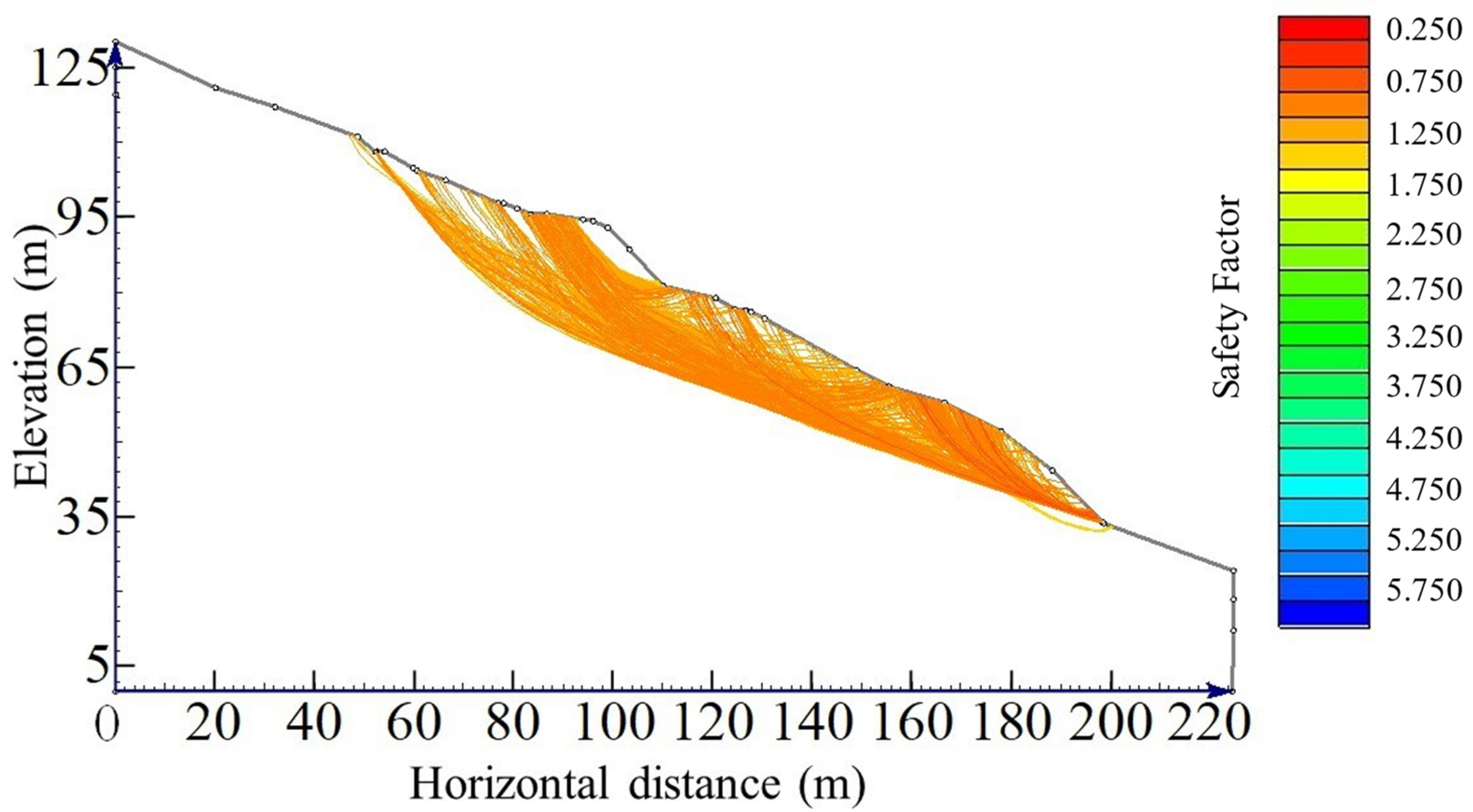


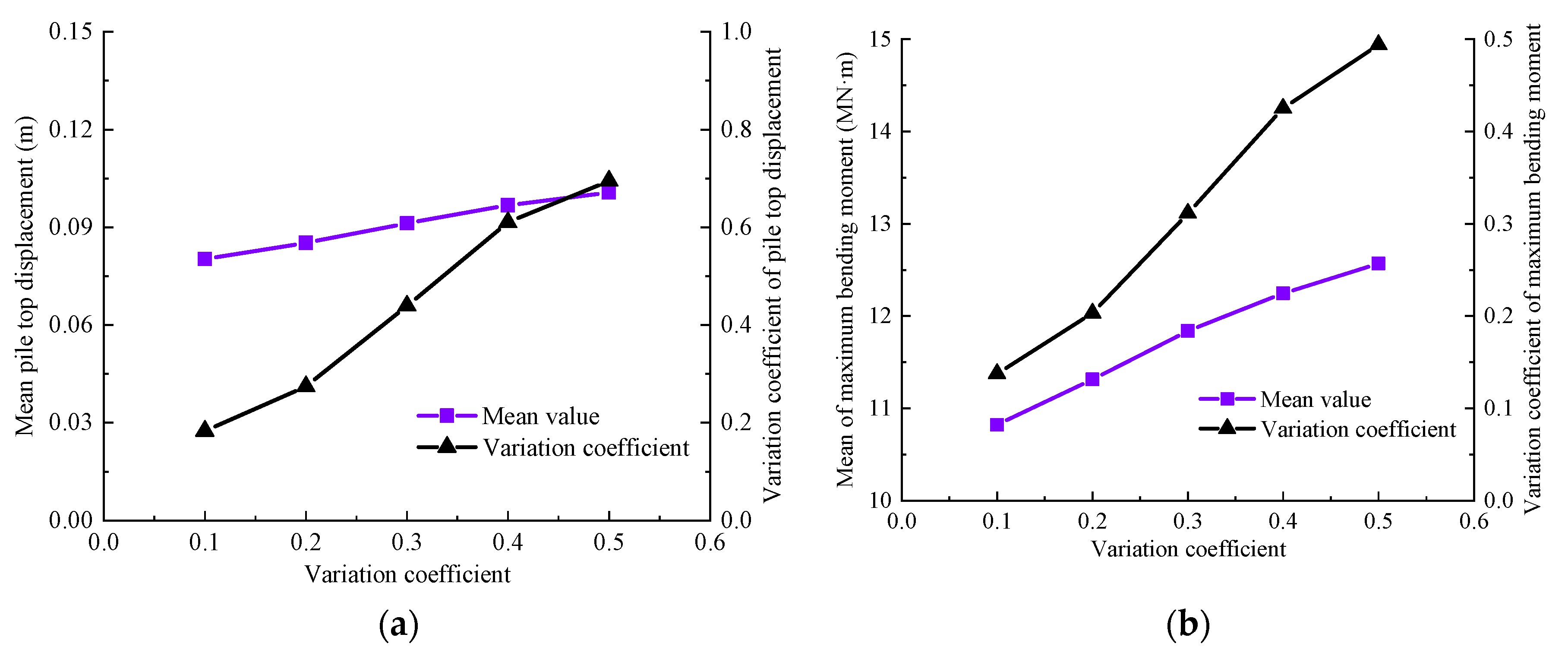
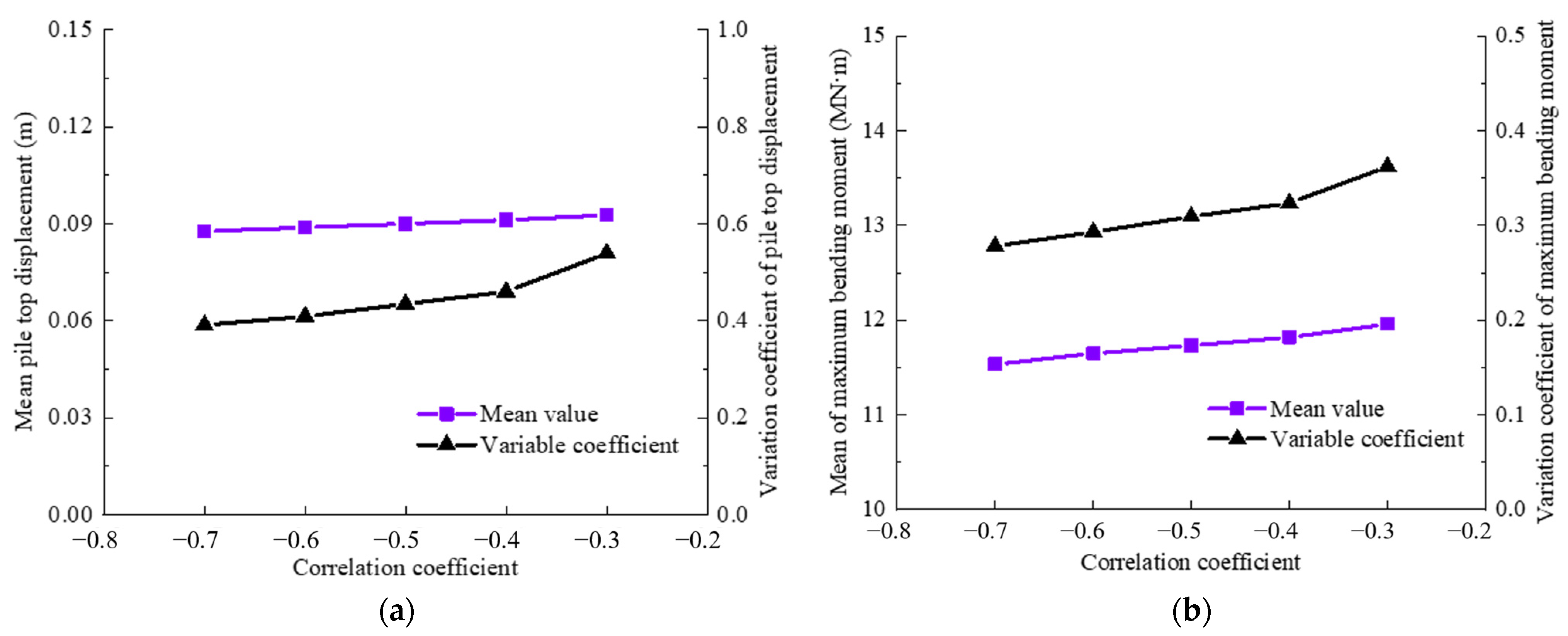
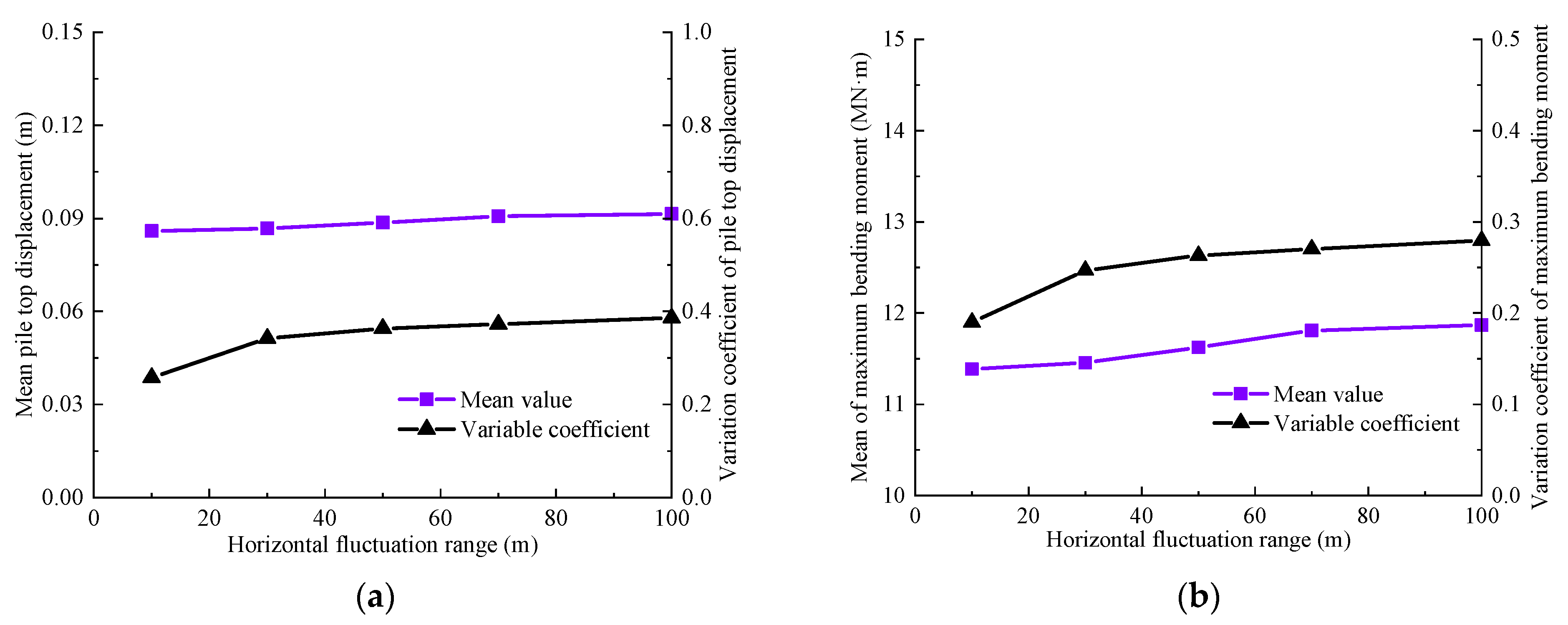
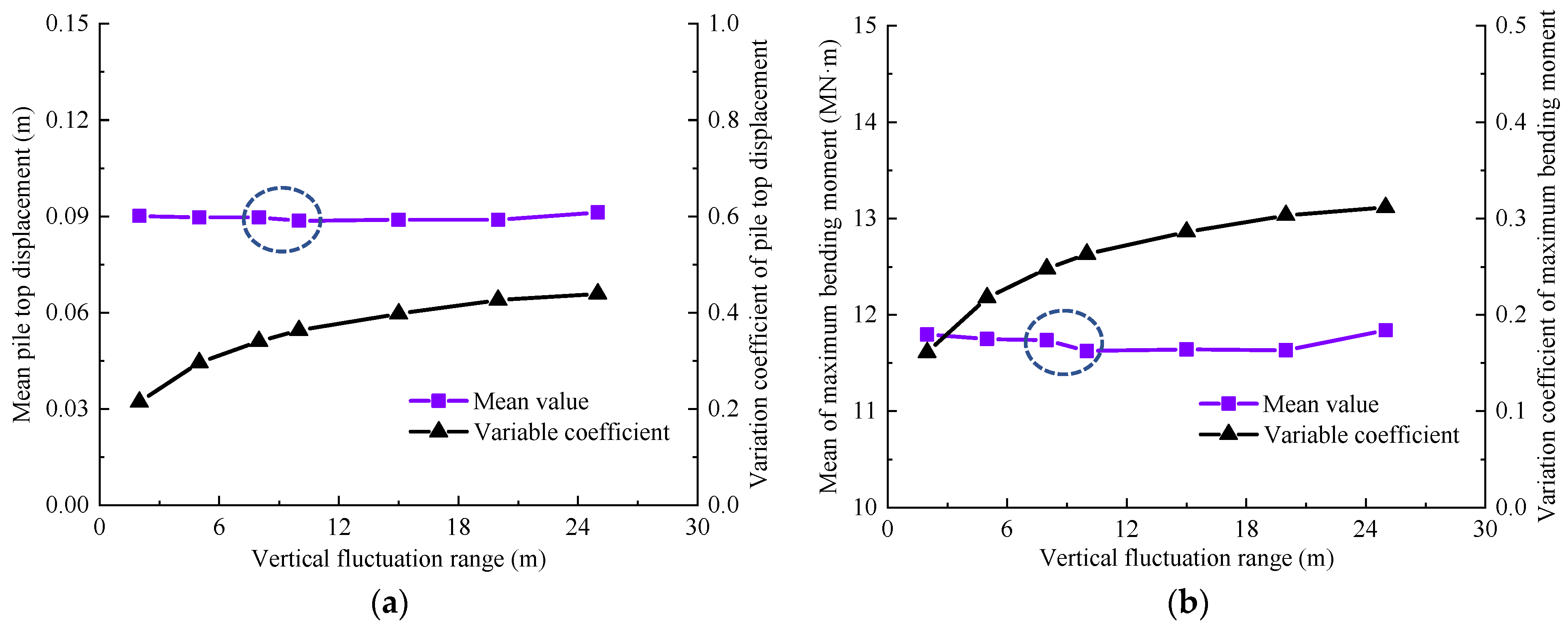

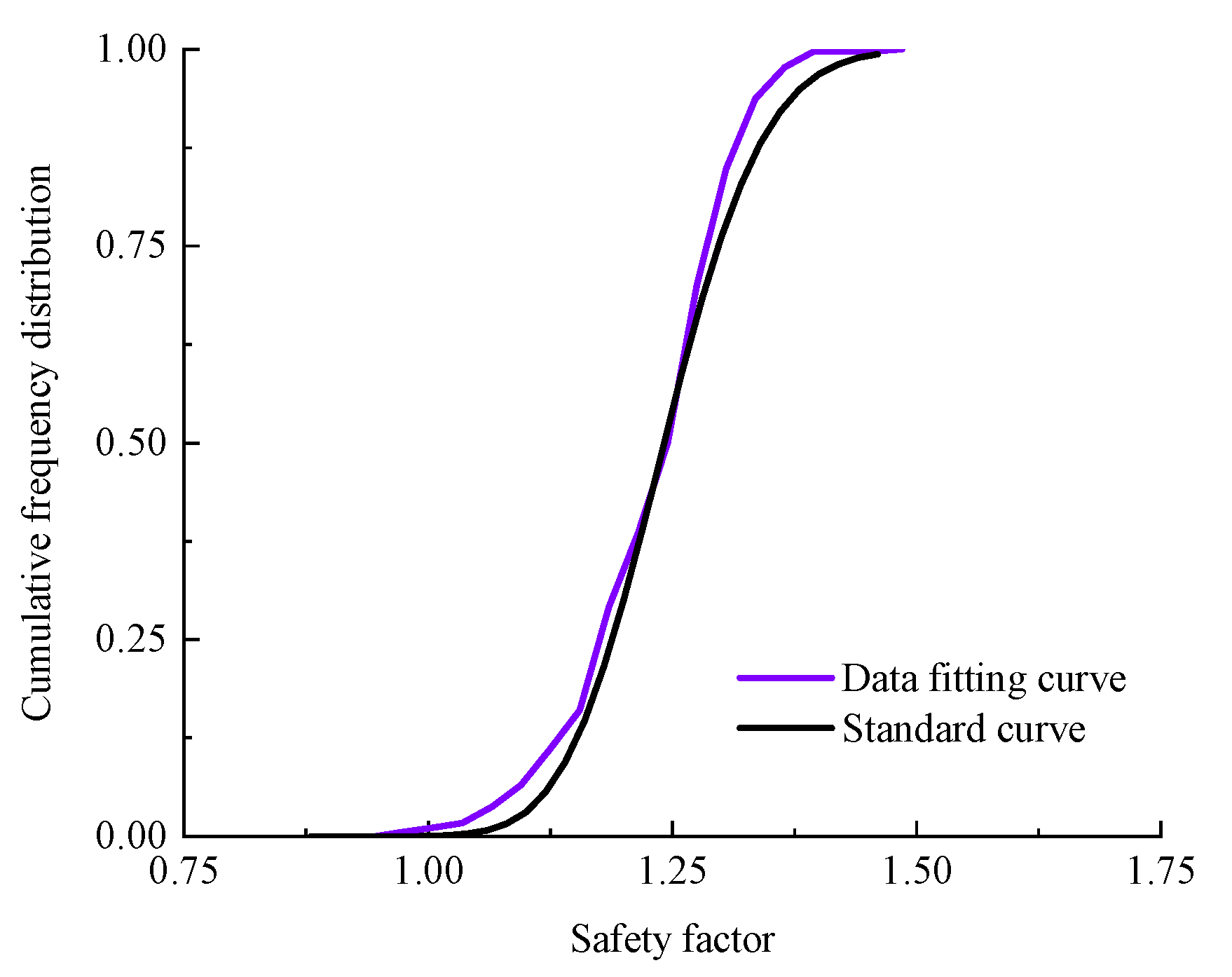
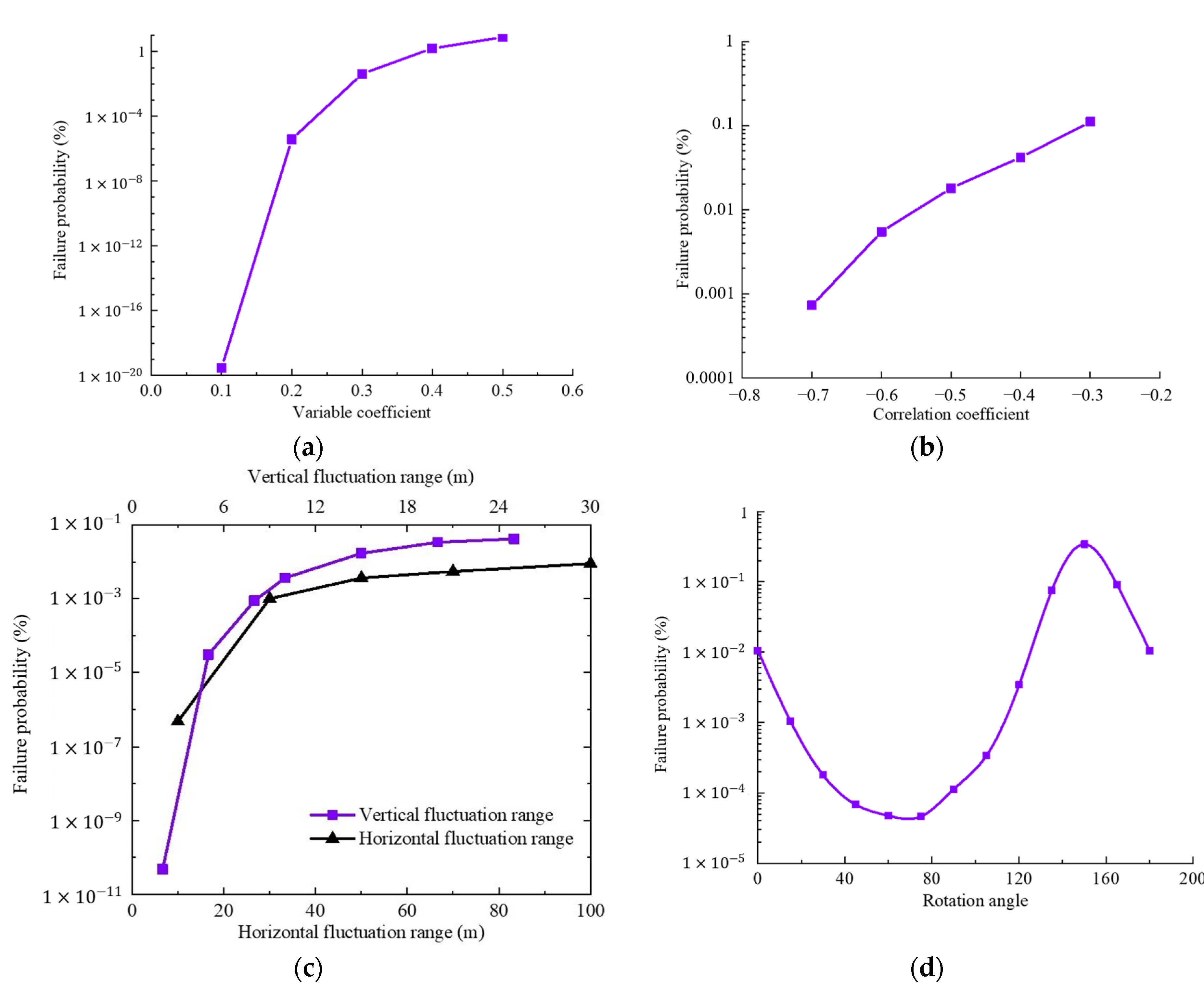
| Rock and Soil Mass | Modulus of Elasticity (E)/MPa | Poisson’s Ratio (μ) | Severe (γ)/(kN·m−3) | Cohesion (c)/(kPa) | The Angle of Internal Friction (φ)/(°) |
|---|---|---|---|---|---|
| Silty clay with crushed stone (Q4del) | 40 | 0.35 | 19.6 | 33.15 | 13.37 |
| Piece of gravel soil (Q3del) | 71.5 | 0.15 | 19.72 | 26.12 | 29.4 |
| Sliding-zone soil | 25 | 0.2 | 17 | 21.02 | 24.82 |
| Stratified cataclastic rock mass (Q3col) | 9000 | 0.26 | 25.5 | 290 | 31.9 |
| Middle Triassic Badong Formation (T2b) | 8000 | 0.22 | 23 | 1000 | 35 |
| Type | Density (kg/m3) | Modulus of Elasticity (GPa) | Cross-Sectional Area/mm2 | Slurry Cohesion/(N/m) | Internal Friction Angle/° | Shear Stiffness/(N/m2) | Paste the Perimeter/mm | Compression Strength/kN | Tensile Strength/kN |
|---|---|---|---|---|---|---|---|---|---|
| Anchor | 7800 | 195 | 181.37 | 2 × 105 | 0.08 | 1.75 × 107 | 471 | 337.35 | 337.35 |
Disclaimer/Publisher’s Note: The statements, opinions and data contained in all publications are solely those of the individual author(s) and contributor(s) and not of MDPI and/or the editor(s). MDPI and/or the editor(s) disclaim responsibility for any injury to people or property resulting from any ideas, methods, instructions or products referred to in the content. |
© 2023 by the authors. Licensee MDPI, Basel, Switzerland. This article is an open access article distributed under the terms and conditions of the Creative Commons Attribution (CC BY) license (https://creativecommons.org/licenses/by/4.0/).
Share and Cite
Gao, X.; Wang, L.; Wang, Q.; Hu, X.; Wang, Y.; Zhang, Y. Stability Analysis and the Random Response of Anti-Sliding Pile for Erdaogou Landslide Considering Spatial Variability. Mathematics 2023, 11, 2318. https://doi.org/10.3390/math11102318
Gao X, Wang L, Wang Q, Hu X, Wang Y, Zhang Y. Stability Analysis and the Random Response of Anti-Sliding Pile for Erdaogou Landslide Considering Spatial Variability. Mathematics. 2023; 11(10):2318. https://doi.org/10.3390/math11102318
Chicago/Turabian StyleGao, Xuecheng, Luqi Wang, Qi Wang, Xinyun Hu, Yucheng Wang, and Yanfeng Zhang. 2023. "Stability Analysis and the Random Response of Anti-Sliding Pile for Erdaogou Landslide Considering Spatial Variability" Mathematics 11, no. 10: 2318. https://doi.org/10.3390/math11102318
APA StyleGao, X., Wang, L., Wang, Q., Hu, X., Wang, Y., & Zhang, Y. (2023). Stability Analysis and the Random Response of Anti-Sliding Pile for Erdaogou Landslide Considering Spatial Variability. Mathematics, 11(10), 2318. https://doi.org/10.3390/math11102318







